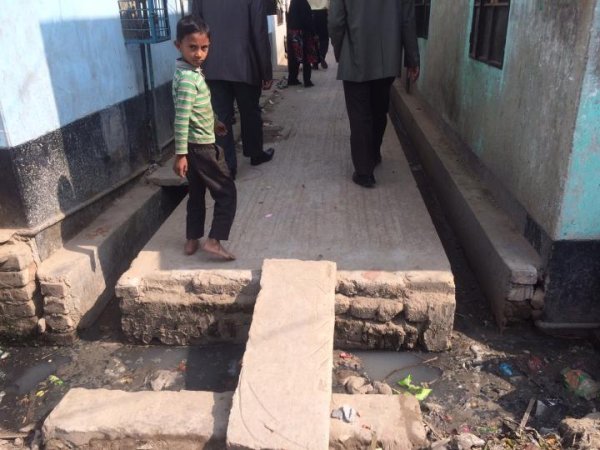

Over 10 percent of the children under the age of five living in the United States have special health care needs, including chronic physical conditions, like epilepsy, or behavioral ones, like autism. Those millions of children and their families are more at risk of housing instability than children without health needs, according to a new study—which can exacerbate their underlying condition. The research highlights the important role having a permanent home plays in everyone’s overall health.
“It is a lot harder for children with special health care needs to get stable housing,” says Andrew Barnes, professor of pediatrics at the University of Minnesota Medical School, who was not involved in the new study. “It can lead to a really concerning negative cycle: Kids are less healthy, they’re less likely to get good housing, and that in turn can [negatively] affect [their] health.”
The new study, published this week in the journal Pediatrics, used data from surveys given to caregivers of over 14,000 children under the age of four at five different hospitals around the country. The survey included a screening for special health care needs of the children in their care and measures of housing instability—which does not just mean homelessness, notes study author Ruth Rose-Jacobs, a researcher with Children’s HealthWatch at Boston Medical Center. Families were considered to be housing unstable if they were behind on rent or mortgage the previous year, if they moved multiple times in the previous year, or if they had experienced homelessness, defined as living in a shelter or with no steady place to sleep.
“We don’t often think about multiple moves as a housing insecurity issue,” Rose-Jacobs says, “but you make multiple moves if you’re not able to pay rent.”
The study found that families of children with special health care needs were more at risk for all indicators of housing instability. The results reflected what Rose-Jacobs sees in health care clinics. “I see this connection between housing and other basic needs and difficulties people face when they have children with special health care needs,” she says.
That relationship is likely driven by the additional medical cost of caring for these young children. “The direct financial cost is number one, but also the families of these children are less able to work the same hours as others,” Rose-Jacobs says. “They end up taking a lot of time off or sometimes end up taking lower paying jobs so they have more flexibility. The direct medical costs are easiest to see, but there are also a lot of hidden costs.”
Housing instability, in turn, can affect the children’s underlying health conditions. A move, for example, might mean moving outside the range of a medical care team, or outside a district providing early intervention services. “It makes it more difficult to access usual medical care,” Rose-Jacobs says. “A lot of times the medical system and early intervention programs lose track of people.”
Moving, crowded housing, and homelessness are also stressful on the body, which can exacerbate health problems, Barnes says. Housing instability is also stressful for parents. “Distress on the parent affects children,” Rose-Jacobs says. “Parents might be more likely to have depressive symptoms, which is a negative risk factor for children.”
The new study also found, however, that Supplemental Security Income [SSI]—which provides cash assistance to families of disabled children—removes the risk of housing instability for families of children with special health needs. Not all children with special health needs qualify for SSI, but in the study those who received it had comparable risk of housing instability to healthy children, even though they likely face more significant challenges than children with health needs who might not qualify.
“It speaks to how helpful it is for families to get that supplemental income,” Barnes says.
That finding also indicates that children with health needs that don’t reach the level that would qualify them for assistance, like asthma, might be more likely to experience housing instability, says study author Diana Cutts, chief of pediatrics at the Hennepin Healthcare Department of Pediatrics. “Because they’re not eligible for the kind of support a more severely disabled child is, they’re at the greatest risk,” she says.
But even for children who do qualify, accessing SSI is challenging. “People don’t realize how difficult it is,” Rose-Jacobs says. “The paperwork and the processing and interviewing is very difficult for anyone, and especially for parents of a kid with special needs.”
Easing the process for qualified families, raising income limits to include more families, and offering more flexibility could help better meet their needs. Any short-term costs would most likely offer long-term financial and health care benefits, she says. “If someone is in good housing, the more likely the kids are to do better and have long term success.”
Even in advance of any policy changes to the program, pediatricians can help, by working with families and helping refer those who might be eligible for SSI, Barnes says. “Pediatricians who see children with chronic health conditions should be asking about housing at every visit.”







